Part Indiana Jones, part Anthony Fauci, part That-guy-who-thrives-at-every-damn-sport-he-tries, 95-year-old Johan Hultin is the hero we need now. His work as an adventurer/pathologist is helping fight the coronavirus today.
"It is absolutely certain another pandemic will come, but we don’t know what form it will be. The question is, How can we be forewarned?"—Johan Hultin, February 2002
Johan Hultin was 72, comfortably retired and happily married, when he decided to dig up the dead bodies again. The year was 1997. There was no pandemic; no urgent reason to fly to Alaska, hike into the wilderness and search for remnants of the deadliest virus the world had ever known. There was just a nagging thirst within the adventurer, and a few other curious pathologists, to learn at a molecular level why the 1918 flu had been so lethal. Why had this particular pathogen, which history calls the Spanish flu, killed as many as 100 million people in just two years—more death than any other ailment had caused in such a span; more, by some estimates, than in World Wars I and II and Vietnam, combined—while other influenzas came and went unnoticed?
Hultin had tried to find the answer once before. In 1951, when he was a 25-year-old doctoral candidate at Iowa, he deployed the alpine mountaineering skills he’d honed as a youth in Sweden, trekking to an Alaskan outpost called Brevig Mission, where the 1918 flu had killed 72 of 80 adult residents. For days Hultin dug alone into the icy earth of a mass grave, hoping to discover well-preserved remains of some of those six dozen victims. He succeeded and carried the samples home to Iowa City—but he and his colleagues failed to decode the virus. They did not learn why it had exterminated roughly 3% of Earth’s population. They did not create a vaccine to ward off its return.
The mystery, then, persisted until 72-year-old Hultin read in Science magazine about a virologist at the National Institute of Health who was inching closer to the 1918 pandemic’s secrets. That doctor, though, needed more samples. He needed better preserved samples. And that was a nearly impossible thing to come by 79 years after the pandemic hit.
Unless you were Johan Hultin. The spritely, white-bearded Swede knew just where to look for bodies untouched by time. And he had already demonstrated the blend of tenacity, tact and, above all, physical vigor necessary to lift them out of the earth and place them under a microscope.
***
“Hallo?” Hultin murmurs into his phone in mid-April, his vowels still brushed by a childhood spent in Stockholm.
His English-born wife, Eileen, had answered the line first, and in her lilting Cheshire accent she’d advised the calling stranger that Johan might not be much help. He’s 95 now, and his memory isn’t what it was, said Eileen, who herself is 85. He can fade in and out of conversations. “No, my husband’s too old,” she warned. “He can’t answer questions.”
But Johan was at her elbow, listening, his interest piqued, and she knows that trying to stop him is a useless endeavor. So a moment later he is on the phone, the old high school running champion who would go on to climb some of the world’s highest peaks. He harkens back to various other tests he’s conducted on the limits of the human athlete—tests that trained him, without him realizing it, for the accomplishment that will someday top his obituary: his quest to pry from Earth’s clutches the secrets of the virus that brought humanity to its knees.
Where to begin? Hultin has pushed so many red pins into the map of his life that it’s easy to get lost. It’s best to let him start at the trailhead.
Hiking to school as a kid—an eight-mile round trip, he recalls—would have taken too long, so young Johan made the journey on cross-country skis, stabbing the snow-covered ground with poles “year after year, winter after winter.” As a teen he shunned the cushy jobs afforded to him by his family’s affluence (his stepdad was one of the doctors who conferred the Nobel Prize for medicine each year) and worked instead as a lathe operator, a welder, a longshoreman.
It takes him a while to admit it, or remember it, but he was named athlete of the year at his upper secondary school three years in a row, a distinction awarded to whomever won the annual 400-meter run. His rare physical aptitude, not just to traverse the Earth but to move cumbersome parts of it—“the ability to persist is a valuable talent in itself, I’ve learned”—would serve him well. Mankind, too.
The Second World War raged during Hultin’s teens. “The countries around us were occupied by the Germans, so I grew up confined to Sweden,” he says. “When the first opportunity came”—when he was around 20—“I took off. And walked.”
Not for a jaunt across liberated Europe, either. “I set my sights on the pyramids outside Giza,” he deadpans, as if trekking from Stockholm to North Africa was no big deal. The voyage, across land and sea (after convincing a ship’s captain to let him earn his way across the Mediterranean by working in the engine room), took 16 days. He brought along next to nothing, outside of the physical tools he’d been honing since birth.
In 1949, when Hultin paused his education at 500-year-old Uppsala University to pursue one at Iowa’s medical school, he was prepared. Stockholm’s winters rank up there with Iowa City’s in terms of cold. But Iowans “had never seen someone cross-country skiing to class,” he laughs.
The 23-year-old and his new bride, Gunvor, arrived at Ellis Island after 10 days at sea and promptly set out to visit each of the 48 states. Having met that goal, the honeymooners vowed to drive north through Alaska until there was no more road.
This was 10 years before that territory became a state. It was largely untouched, like Antarctica with forest. The voyagers stopped one night in the pioneer town of Fairbanks, where a German paleontologist from the University of Alaska, Otto Geist, invited these strangers to accompany him on a fossil-digging mission throughout the territory. Johan and Gunvor—a radiation biologist—couldn’t have said yes faster. What Hultin didn’t know: It was perfect training for the world-changing mission ahead of him.
Cut to a scene one year later, in a lab on the Iowa campus. Hultin overhears a visiting physician remark that even though the 1918 flu infected one-third of the world’s population, no one knows the first thing about it. The only way to learn why that pandemic struck with such devastation, the doctor continues, is to exhume the frozen body of a victim who died somewhere near the Arctic Circle and was buried in the solid layer of ice and earth known as permafrost.
Hultin the aspiring pathologist knew all about the 1918 flu’s effects. The virus went straight for the lungs, sending a victim’s immune system into a panic that filled the respiratory system with fluid and bloody froth. The faces of the stricken turned blue with under-oxygenated blood. The dead were often found lying in the street, bleeding through the mouth and nose from suffocation.
Flu-stricken patients at Camp Funston, in Kansas, where the 1918 pandemic is believed to have first touched the U.S.
In the end, after three increasingly deadly waves of infection, the virus vanished. But there would be no postmortem. The field that came to be known as virology was still in its infant stages. The dead rotted, unexamined by doctors who feared meeting the Reaper themselves. The disease’s genetic fingerprints were never found.
Decades later, though, the remarks of that visiting doctor in Iowa could not have landed on the ears of a researcher more qualified than Hultin to act on them. Even if Geist, the paleontologist Hultin and his wife had explored Alaska with a year earlier, didn’t know precisely where such well-preserved bodies were buried (to borrow a phrase), he could help Hultin find out which villages kept death records from 1918, and which ones interred their deceased in permafrost.
Within a year, the 25-year-old Hultin was headed, along with two Iowa professors, to Nome, Alaska, where the older pair stayed while Hultin flew back and forth across the tundra with a bush pilot who had a failing engine and an affinity for near-misses with hills. Hultin had pinpointed three possible burial locations. The first, a cemetery near Nome, turned out to be too close to a river, which had softened the permafrost. Hultin’s pilot reached the second location, Wales—the westernmost village on the mainland continent, just 50 miles from Siberia—by hopscotching across various snow-swept beaches. This time the ocean had lapped too close to the permafrost, thawing the 178 flu victims within.
Hultin’s last hope, Brevig Mission, was unreachable by plane, so his pilot landed their puddle jumper six miles away, in Teller, from which Inuits transported Hultin across an ice-chunked inlet using a whaleboat made of walrus skin. In Brevig, Hultin introduced himself to the head missionary and accepted an invitation to bunk down with the man’s family. The village council was summoned, including three flu survivors, and Hultin listened to their stories. When they finished, he asked in reverent tones for their help in making sure nothing like 1918 ever happened again.
Hultin began digging the next day. Gold miners had 33 years earlier buried Brevig’s flu victims using special ice-piercing equipment, but Hultin had sharp tools, too: his ingenuity and his endless capacity for work. Both came in handy when, three feet down, he hit permafrost, hard as a diamond. Thus began the slog: He built a driftwood fire at one end of the deepening rectangle he was digging and hacked at the softened earth there while a new fire warmed the rectangle’s other half. Back and forth he went, as long as 18 hours a day, while villagers watched from the rim of the sinking pit. On the fourth day, Hultin found a body—a girl with ribbons in her hair.
The first Brevig Mission dig, in 1951.
Hultin called for the professors in Nome to come to Brevig, where together they extracted samples from five frozen corpses. The dry ice they’d brought from Iowa to refrigerate the returning samples had since evaporated, so at each refueling stop on the flight home to the Midwest, Hultin leapt from the DC-3 and injected fire-extinguisher foam into the thermoses that preserved the Inuits’ lung tissue.
Alas, after six weeks of experimentation in Iowa City, Hultin and his colleagues could grow no new virus. For all the mission’s adventure, it failed. Hultin would later say he was glad he came up empty, for reanimating the virus would have made him famous at too tender an age. “My future would have been very narrow,” he told the San Francisco Chronicle in 2002. “I didn’t find it, so I had the chance to do other things.”
***
In 1957, Hultin moved his wife and four kids to the Bay Area, where he practiced pathology, hunting less lethal ailments. He bought a scruffy patch of property in remote Alpine County, closer to Nevada than to the Pacific, and spent nearly 40 years building a scale replica of a 14th-century Norwegian villa that he’d seen as a boy. Starting with 10 redwood trees—each one 40 feet long, as much as seven feet in diameter—he earned his license to drive an 18-wheeler and acquired a portable sawmill designed to be trucked across the Amazon rainforest. He went to school and learned how to do woodworking, electrical wiring, plumbing and tile-setting. He studied, too, the weather patterns of the Sierra Nevadas and their impact on redwoods, and he predicted the chalet would stand for 800 years.
Hultin, who had divorced Gunvor, married Eileen in 1985. That same year he and five other climbers scaled P5844, a peak of 19,173 feet in Pakistan’s craggy Karakoram Range. It was a “presumed first ascent” of that mountain, according to the American Alpine Journal . Hultin’s fellow climbers sought to rename the summit “Hultin’s Peak,” in honor of the oldest member of their group. But the 60-year-old insisted on the less egotistical “Old Codger’s Peak.”
As if still starved for challenge—beyond solving a pandemic, ascending the Himalayas and building a house—Hultin dabbled in automotive safety, inventing various seat-belt improvements.
And then there was his fascination with an ancient maze near his childhood home. In middle age Hultin decided, he says, “I was going to rebuild the oldest known labyrinth in the world.” He visited those early Greek ruins, in Crete, photographing and measuring them to the centimeter, then returned home and re-created the labyrinth in his vast backyard “using hundreds and hundreds of big rocks. Very heavy.”
Added up, it can all sound like a put-on—harmless embellishments, perhaps, from a fading mind. So the caller accepts Eileen’s invitation to look up her home. And there it is on Google Maps: a wooden castle that transports one to Scandinavia in the 1400s. Pull out a bit and a satellite view reveals a circular labyrinth of small boulders, swirling in the yard. “I was up there the other day,” Hultin rasps, “and, my god, it’s still there! Amazing! It’s been a long time now.”
Hultin's idea of a pet project: a scale replica of the oldest known labyrinth in the world.
Still, there was that one passion that Hultin could never conquer. He kept a file of every mention of the Spanish flu that has appeared in print since 1951. Every scientific journal blurb and every report on the related pandemics of ’57 and ’68. Notes on the discovery of hemagglutinin and neuraminidase, the proteins that give viruses like H1N1 their name. And, of course, every tiny advancement toward decloaking the killer of ’18. He held these clippings dear, like grainy photos of a fugitive he’d almost caught and longed to pursue again. He wondered privately whether he might one day resume that chase.
***
Today, as the coronavirus pandemic exerts its grip on the world, Johan and Eileen Hultin live secluded in an active retirement community in Walnut Creek, Calif. “We moved here seven years ago,” says Eileen, a retired Stanford docent and a lifelong learner who earned a degree in art history a week after her middle daughter graduated from Brown. “There are 10,000 people here, so it’s like our own little city. It’s lovely.”
Each morning she and Johan sit on their deck and drink tea. “I’ve got my Swedish husband converted [from coffee],” Eileen laughs. “A cup of tea makes everything go more smoothly.”
As the world stands on pause, Johan pays the price for wringing every drop out of the 95 years he’s been given. While he takes no medications and doesn’t look a day over 80, the body that has climbed some of the planet’s highest peaks and trekked across more than 100 countries finds it hard getting around these days.
Until two years ago, Hultin was still hiking with his seniors’ trail club, covering three miles two or three times a week. Around his 93rd birthday, “that’s when his body started to let him down,” Eileen laments. “And now the mind—it’s just not clear-thinking anymore.”
But those closest to him know what he’s thinking, especially today, amid the coronavirus pandemic. “A lot of our friends,” says Eileen, “have been calling and sending texts and emails saying, ‘This is exactly what Johan has warned us of since 1997. We should have paid attention.’ ”
There’s a shuffling noise behind Eileen, and the sound of her hair rubbing the landline phone. “Well, I see that my husband has come in here. . . . I think he wants to talk to you again.”
The good doctor, sensing the pregnant question at hand—Are we all gonna be O.K.? —preemptively answers it: “There are only two things that can threaten mankind in the short term. One is an influenza virus, and the other is nuclear war.”
This current pandemic “will not end us,” Hultin says. “But there is always a risk that the virus will mutate. Nineteen-eighteen is an example. That [virus] was rather mild, but then it mutated and became terrible. If that virus showed up today, it would wipe out the civilized world. That’s not my opinion, that’s fact.”
Hultin, circa 2000.
“You have to know the virus,” he continues, firmly in his groove now, showing no hint of the mental lag his wife anticipated. “All living things—trees, birds, people—they have one thing in common, and that is reproduction . You have to reproduce. If you die, you don’t reproduce. If you look at smallpox and cholera—the Black Death in the 1500s—eventually the organism became less and less lethal because it didn’t want to die with the victim. That’s why the 1918 influenza virus disappeared.”
That virus was still missing, so to speak, when Hultin put down the Science magazine article in 1997 and wrote a letter to Jeffery Taubenberger, the government scientist who was trying to pick the old flu’s genetic lock.
Hultin chose his words carefully, trying not to come off like a crazed mountain man. He told Taubenberger about his journey to the mass grave in Brevig, 46 years earlier, and informed him rather casually that he could go up there again if Taubenberger ever wanted him to. Taubenberger replied quickly, informing Hultin that a separate, generously funded expedition had been in the works for years. They were scheduled to exhume bodies in Norway some time in 1998. “When could you go?” Taubenberger asked.
“I’m free next week.”
Hultin would have left the following day if he hadn’t been busy putting the finishing touches on his redwood cabin.
***
This 1997 sequel to Johan Hultin’s ’51 trip needed to be faster, simpler. He had no rib openers, for example, so he packed Eileen’s pruning shears.
That August was a month for pioneers. Steve Jobs and his “cellphone” adorned the cover of Time . Seventeen-year-old Venus Williams became the first unseeded player in the Open era to reach the U.S. Open womens’ final. Near the Bering Strait, meanwhile, a 72-year-old record-setting mountaineer, forensic pathologist and virus hunter was engaged in a solo journey that married Jobs’s intellect and Williams’s fortitude, sailing again across an icy inlet toward a vault of frozen secrets.
This time around, when Hultin shook hands with the village matriarch in Brevig (having dismissed the Norwegian expedition Taubenberger mentioned, which would have required waiting a year), he resembled a more rugged version of Sigmund Freud. She had ancestors who were claimed by the flu of 1918, she told Hultin, and she presented him to the village council. “Over the years I had developed a deep respect for native people,” Hultin recalls. “People who can survive in harsh environments, out of sight of the rest of the world.” The deference he showed toward the Brevig locals again won them over. “They picked up that I was not a dangerous person, and I had not come to steal from them.”
Blessing secured, Hultin began digging on the afternoon of his arrival. This time he was helped by four villagers, each of whom he paid $200 to $300 out of his pocket. (Hultin financed the $3,200 expedition himself to avoid the delays and red tape of seeking funding.) Every time he and his indigenous assistants encountered an unyielding vein of permafrost, or a crack in one of their shovels, Hultin summoned the same resourcefulness he’d employed to reach Giza as a teenager. When darkness fell on the frozen tableau of ice and dirt, when Hultin wondered whether he’d taken on more than his septuagenarian body could handle, he thought back to those 10 redwood logs and the intimidating task of making a house out of them. When fatigue and subzero temperatures sunk their teeth into him, he recalled the tenuous hours he’d clung to life after losing track of his climbing party during one hike along the Tibetan plateau, in 1982.
After each day’s work in Brevig was complete, Hultin faxed Taubenberger a one-sentence update, according to Flu , Gina Kolata’s definitive book on the 1918 pandemic. Sleeping on mattress in schoolhouse , he pecked out one night. A local man sold me salmon for $2 so I have no hunger. . . . Got permission. . . . Opened grave. . . . Found Lucy.
Hultin with Lucy in 1997.
Lucy was the name he’d given to the woman he discovered on his fourth day of digging, seven feet beneath the snow. Eileen’s shears pried open Lucy’s sternum to reveal two pristine lungs. But Hultin still had work to do after he lifted Lucy’s lungs from her grave. Back when Hultin first arrived at Brevig, in 1951, the burial site had been marked by two wooden crosses, seven and 11 feet in height. The elements had done away with them in the intervening years, so after Hultin and his helpers carefully refilled their hole, he pulled an all-nighter at a local wood shop, reconstructing the two crosses and planting them where they once stood.
Over the next nine years, Taubenberger and his virologist colleague Ann Reid would use Lucy’s lungs to help sequence the 1918 virus. Now a senior investigator for the National Institute of Health’s Viral Pathogenesis and Evolution arm (and a longtime colleague of Anthony Fauci), Taubenberger is currently on the front line of the coronavirus fight and did not respond to an interview request for this story. Hultin’s Arctic adventures didn’t provide a cure for the pathogen that Taubenberger and the rest of the medical world are currently battling, but Taubenberger’s writings over the years make clear that Hultin and Lucy contributed heavily to our understanding of COVID-19’s predecessor. Lucy provided more raw material than any other sample of the ’18 flu, and the years Taubenberger spent tinkering with its molecules and mutations gave doctors “important information about how to prevent and control future pandemics.”
In February, when the coronavirus was still just ramping up in the U.S., Taubenberger and two colleagues noted “alarming similarities” between the two afflictions. Both attack the lungs, both can spread in secret, without carriers showing symptoms, and both have an off-the-charts fatality rate. “We should remember the 1918 pandemic as we deal with [COVID-19],” Taubenberger and his team cautioned.
Hultin concurs, of course. But when he pauses to consider the full sweep of his action-packed existence, including his role in preparing mankind for war against this new invisible enemy, he says humbly: “I was privileged to have an opportunity to do a lot.” Asked what he’s most proud of, though, he replies without delay. “The ski ascent of the highest skiable mountain in the world.” He’s referring to the Muztagh Ata, in the Chinese Himalayan Plateau, all 24,636 feet of which he scaled in 1982. On skis. “It was the coldest I’ve ever been,” he says of the night he forced his way through chest-high snow and zero visibility before stumbling, exhausted and half-frozen, into camp at 2 a.m. “I was the oldest person to do that. I kept the age record for 16 years.”
Today, mankind has a more challenging obstacle to surmount, Hultin says. Somewhere out there lurks a contagion capable of transforming Cormac McCarthy’s The Road into something resembling nonfiction. (Note: Do not read The Road during the current lockdown.) This silent killer might remain hidden for all eternity, Hultin says, but if it emerges, “some people predict that it will be the end of us. Of civilization, anyway. There will be people—Homo sapiens —still alive, and they will reproduce and the population will be replaced. But it will be another culture, another humanity.”
If that’s the case . . . and if, say, this magazine story were to be found someday, charred amid the ruins, postapocalyptic Earth dwellers should head for Bear Valley, in the most Alaskan section of Northern California. Not only will they find a particularly sturdy shelter there, but in the meadow next to it, adjacent to a stone maze that dates to the late 20th century, they will find what Hultin calls “the mother” of all wheat, a grain whose origins go back at least 10 millennia. He found the primeval plant on a hike in southeast Turkey, 18 years before the coronavirus pandemic struck, brought its seeds home and planted them near his hand-built cabin.
He hopes to bake bread with their harvest one day soon. Or maybe his daughters can. For now, he and Eileen will have tea and fruit on the veranda each morning. They’ll walk their 7-year-old Havanese, Archie, and have a small dinner. “I’m 10 years younger, so he refers to me as the young chicken who takes care of him,” Eileen says, laughing.
A pause follows. The creak of a door.
“I’m in a different room now. I’m able to talk to you freely. . . . God bless him,” she says of the athlete-adventurer who will leave his fully lived life with its juices trickling from his chin, the doctor who for nearly 50 years committed to saving us all. “He still has a wonderful sense of humor. It’s the end of the road for him, but he still laughs. He wakes up every morning and says, ‘I’m here again!’ And he goes to bed at night and says, ‘Wasn’t this a wonderful day?’ ”
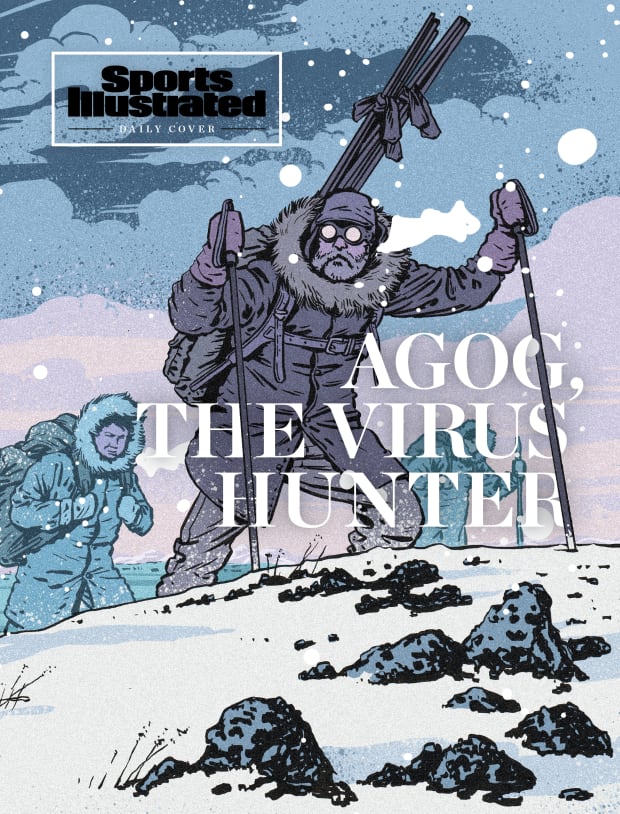
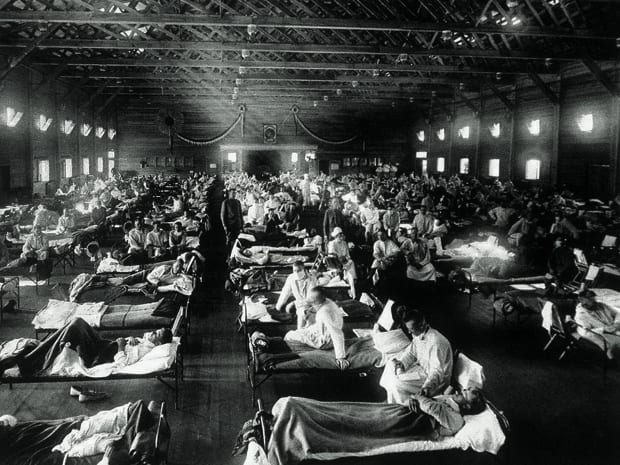
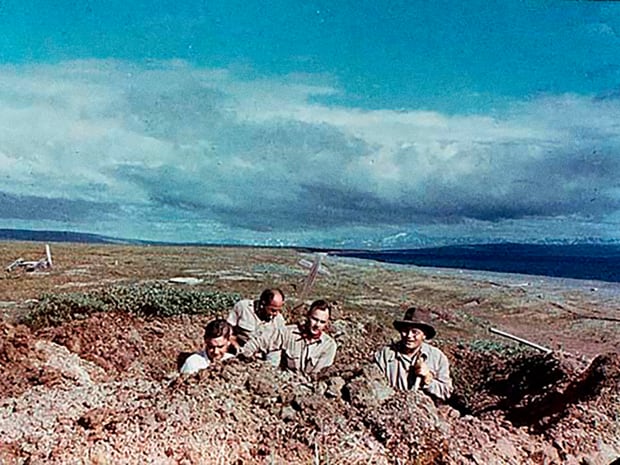

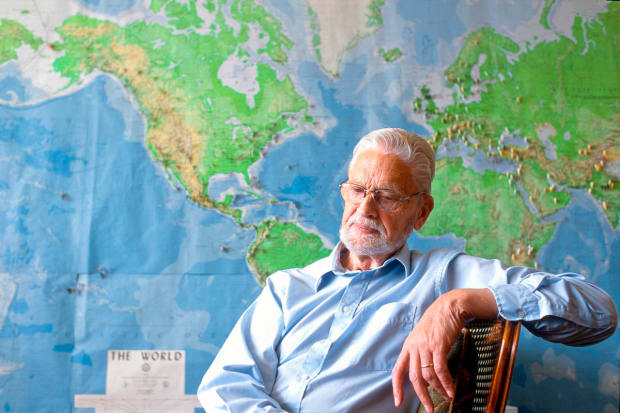
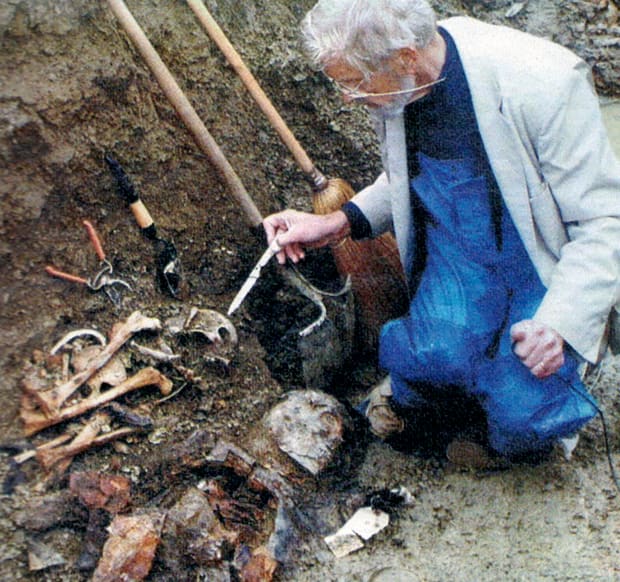
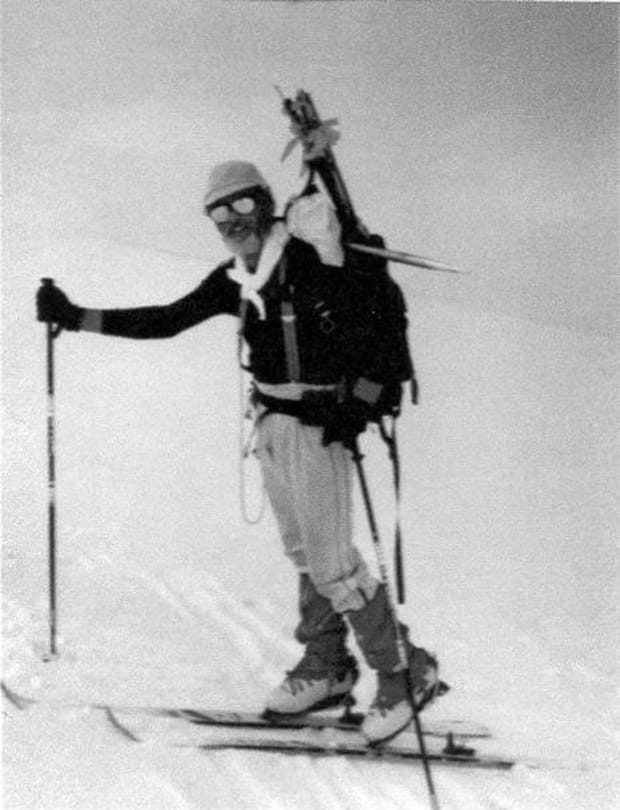
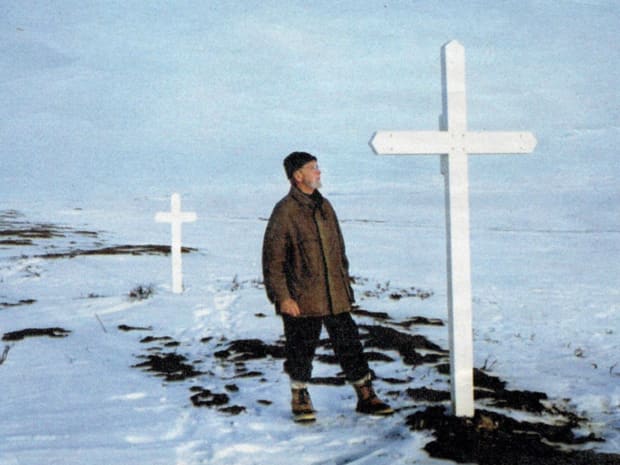
Comments
Post a Comment